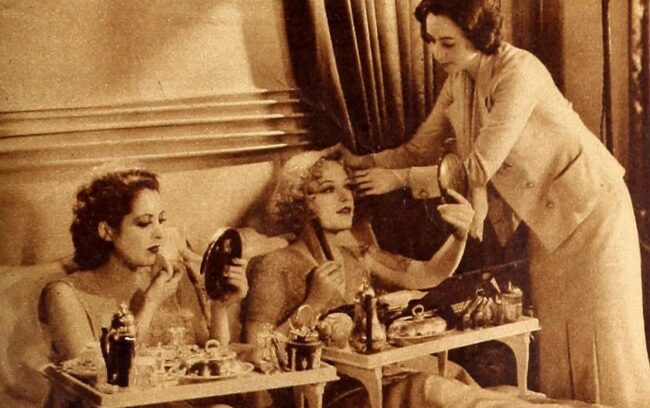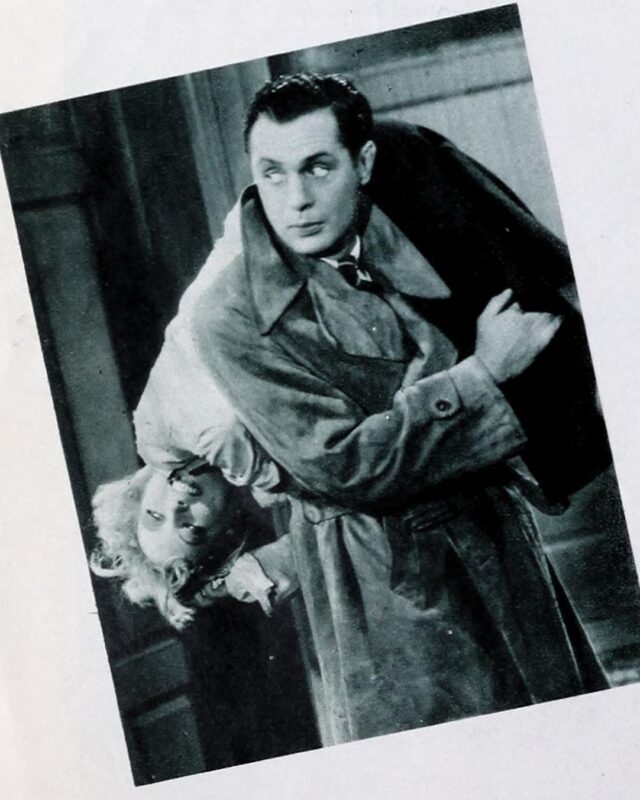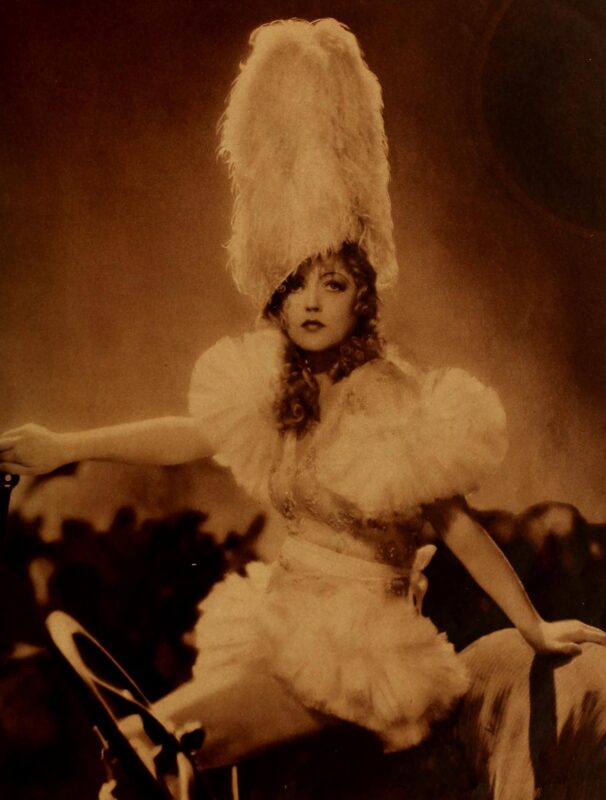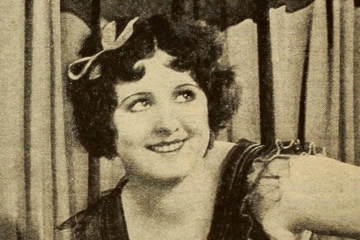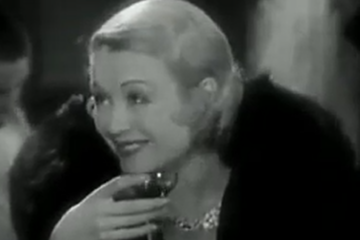Dislike
Starring: Marion Davies, Robert Montgomery, Billie Dove, Jimmy Durante, James Gleason, Zasu Pitts, Sidney Toler, Douglass Dumbrille, Sarah Padden, Louise Carter, Clyde Cook, Rocky Twins, Oscar Apfel, George Cooper, Billy Gilbert, Wilbur Mack, C. Montague Shaw, and Charles Williams
Directed by: Edmund Golding
Released by: Metro-Goldwyn-Mayer
Runtime: 91 minutes
Release date: September 1, 1932
Availability
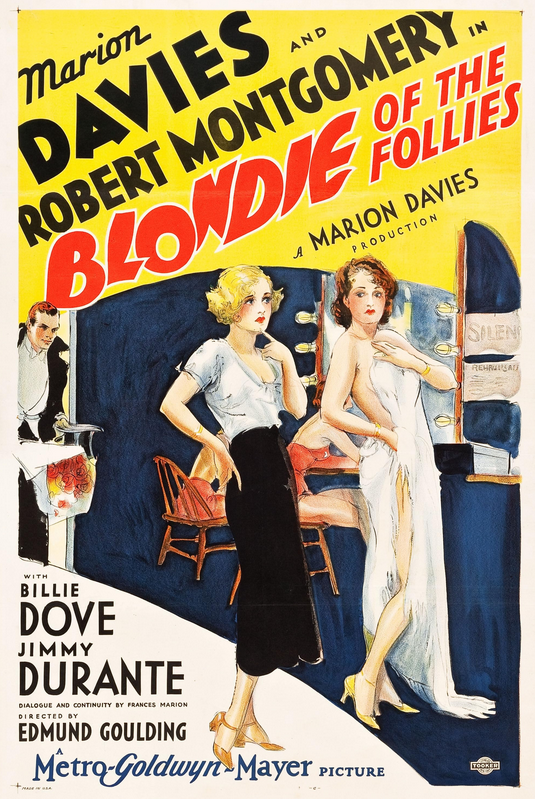
Blondie of the Follies was produced by Marion Davies and released by Metro-Goldwyn-Mayer. The film rights are now owned by Warner Bros.
You can buy Warner Archive’s DVD from Amazon or rent/download it from there as well.
Other sources:
Powered by JustWatchProof That It’s Pre-Code
- Lottie and Blondie get into several physical altercations with one another.
- Extremely topical to when I’m writing this, Robert Montgomery cracks a joke about ‘chow mein’ and ‘Chow dogs’ and asks Blondie if she thinks that this means that Chinese people eat their dogs. She then mutters the racist phrase, “darn clever, those Chinese” under her breath as to insult his bad wordplay as he walks away.
- “Say it.”
“I’m too much of a lady!”
- Robert Montgomery manhandles Marion Davies a few times.
- Set behind the scenes of the Follies means lots of scantily clad ladies scampering about. Billie Dove’s outfit for her numbers is essentially just a number of large pearls covering her derriere.
- Blondie heads to a speakeasy with “soft music, soft lights and hard liquor.”
- “She’s soused to the gills!”
- Billie Dove instructs Marion Davies, “Get into bed, girl, and I’ll tell you an earful!” Davies then begins to undress before the film fades out.
- A few more from What Shocked the Censors:

Blondie of the Follies: Loud and Brash
“Hasn’t it occurred to you that you’re a decent girl from a decent home with decent parents?”
Well, that’s a bit of disappointment. A product with a great deal of pedigree, Blondie of the Follies feels half-baked and empty. For a semi-autobiographical tale of Marion Davies’ life concocted by two of the deftest screenwriters of the early 1930s and designed with great aplomb by MGM, Blondie is a pablum of a mess, a monument to contented ego rather than ambition.
Blondie sees Marion Davies’ Blondie as a poor tenement girl who loves her father and her family but is stuck working paycheck to paycheck. Her high-falutin’ friend Lottie (Dove) eagerly trades her body to fame in the Follies. Blondie innocently follows her to the legendary show, especially engaged once she spies Lottie’s disinterested beau, the wealthy Larry (Montgomery). Also orbiting is Murchenson (Douglass Dumbrille), who likes blondes. Much of the film is Blondie and Lottie sniping at one another, as the constantly-jealous Lottie gets angrier and angrier as Larry and Blondie fall in love.
Up front, you have to feel bad for Lottie here. She’s an ambitious, smart woman whose ego and unrelenting distrust undermine her at every turn. She is so one-note and hot tempered through the film, it’s amazing she and Blondie are friends, let alone that she hasn’t committed a half dozen crimes of passion before the story began. Her only special talent is walking into a room or conversation at exactly the wrong moment– otherwise this screenplay would have wrapped up 45 minutes earlier.
Blondie, on the other hand, is so pleasantly inoffensive that it’s actively grating to watch. Every cliche a screenwriter can throw at a movie to make a character likeable is piled on, from loving her pa to loving dogs. To steal a line, whenever she’s not on screen, everyone is standing around and talking about how great she is.
And with her played by Marion Davies, so she’s a bit of a clown, a bit of a goof, and almost completely unserious. Besides the ridiculously precise enunciation Davies has which seems alien among actors like James Gleason and Zasu Pitts, you can also see her switch emotional modes plainly and with effort. It’s not that I don’t like Davies, but she’s too polished and precise for this character.
There is an insane amount of talking in Blondie in the Follies. Film scholars like to pretend New Hollywood directors invented overlapping dialogue, but no– watch Blondie of the Follies and see a half dozen actors babble incoherently on top of one another. This leaves the movie often feeling formless and unfocused, which doesn’t help with a plot that is one-sided and dull. While Robert Montgomery is charming, Larry isn’t. Why would anyone fight over this useless dork?
Blondie of the Follies is a beautiful looking and shot picture, but charmless. It doesn’t capture the excitement of the Follies, it doesn’t capture the fascination of a rags-to-riches tale, and its romance is completely trite. I had to watch it twice so I could remember the specifics of the film for this review, but, frankly, nothing doing.
Trivia and Links
- Unfortunately, Criterion Channel doesn’t allow screen captures (can’t have anyone making an iPhone wallpaper out of L’Eclisse, after all), so I had to ethically source all the images for this review from fan magazines via Lantern. I’ve linked most in the captions, but here’s the link for this review’s cover image.
- Apologies for never having covered this one before. Frankly, I always have and probably always will confuse this one with Polly of the Circus.
- Marion Davies was indeed a Follies girl and got her start there, as did Billie Dove. Based on a script from Frances Marion, Davies worked with Anita Loos to further dramatize life behind-the-scenes. However, Davies’ lover William Randolph Hearst heavily interfered heavily in the picture, from ditching any scenes that didn’t feature Davies to removing sections of the film that may have made Dove’s character look more sympathetic. Margarita Landazuri has the background over at TCMDB.
- Lara Gabrielle’s Captain of Her Soul: The Life of Marion Davies talks about how William Randolph Hearst filtered into story and production conferences throughout the shaping of this picture. It also mentions that, for all of his interference on the picture, Frances Marion swore she would never work with him again.
- For those keeping track at home, Marion Davies puts on a men’s sailor suit after a fight between her and Dove sends her spiraling off of a yacht. Crossdressing is a recurring theme in Davies’ films.
- This picture’s screenwriters, Anita Loos and Frances Marion, were two of the most prolific screenwriters of this time, and good friends.
- Billie Dove had been a popular actress and comedienne since the early 1920s. (Her salacious turn in Cock of the Air (1932) is one of my favorites.) Blondie at the Follies was her first movie since becoming a star that she took a secondary part. Besides a cameo in a 1960s Charlton Heston movie, this would be her last film role. After her retirement, she became a stay-at-home mother, passing away in 1997.
- Jimmy Durante pops in for a musical number at the 68 minute mark– around the time most pre-Code movies have the dignity to end. Durante talks about having just got back from a screening of Grand Hotel and talks about how girls go wild for John Barrymore, giving Marion Davies the opportunity to ape Greta Garbo. This kind of blatant cross promotion for MGM’s product is barely a step above Lilian Roth serenading a picture of Joe E. Brown in Ladies They Talk About.
- Further links:
What is Pre-Code?

Click to learn more about pre-Code Hollywood, 1930-4, when movies were sexy, smart and sophisticated.
Index of Film Reviews
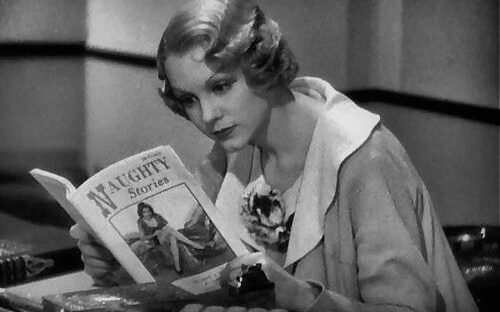
Browse all of the movie reviews on the site as well as schedules and pages that detail the world of pre-Code.
Explore the Pre-Code Era
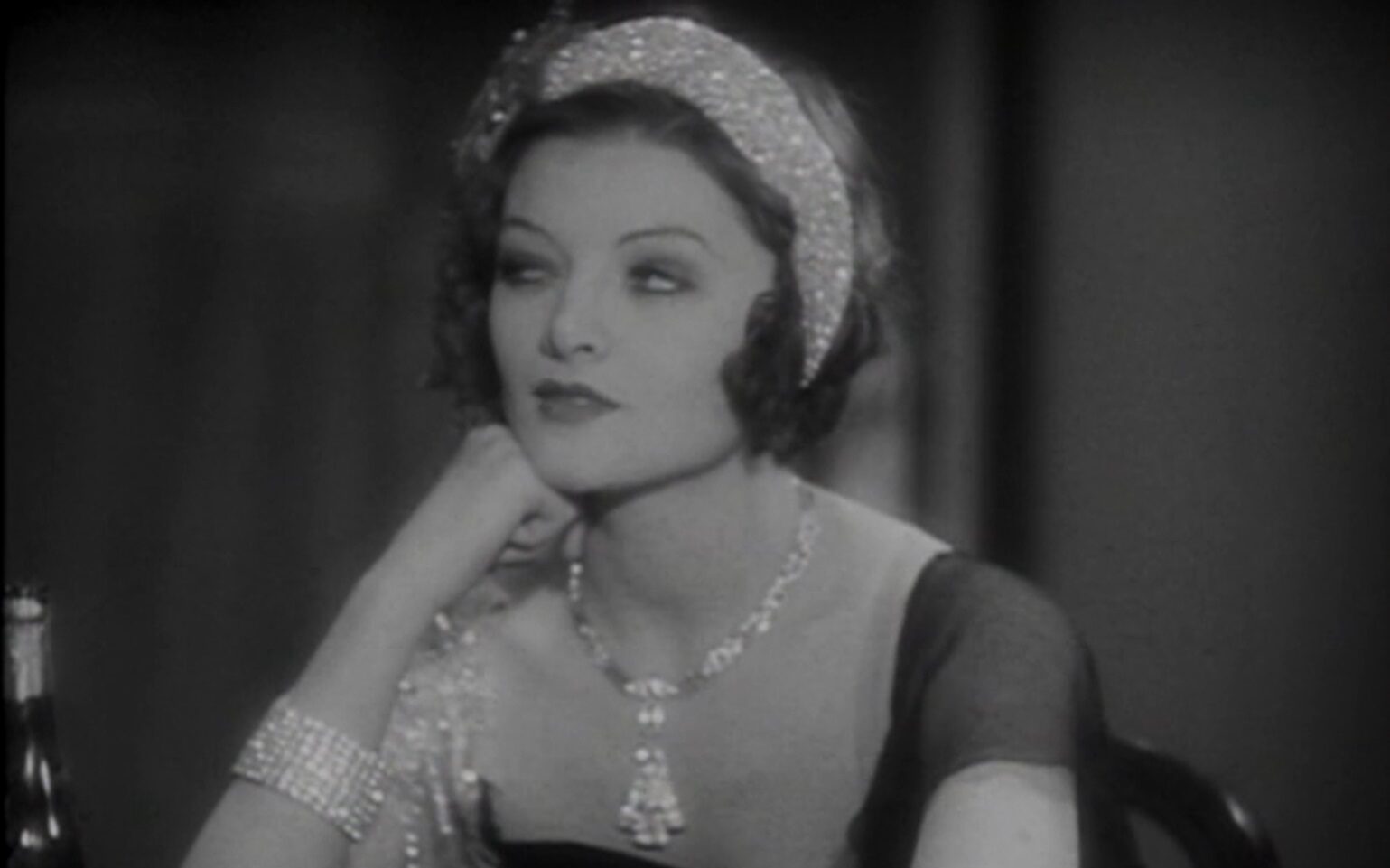
Dig through the pre-Code era through its highlights, its biggest hits, its essential films, and more.
